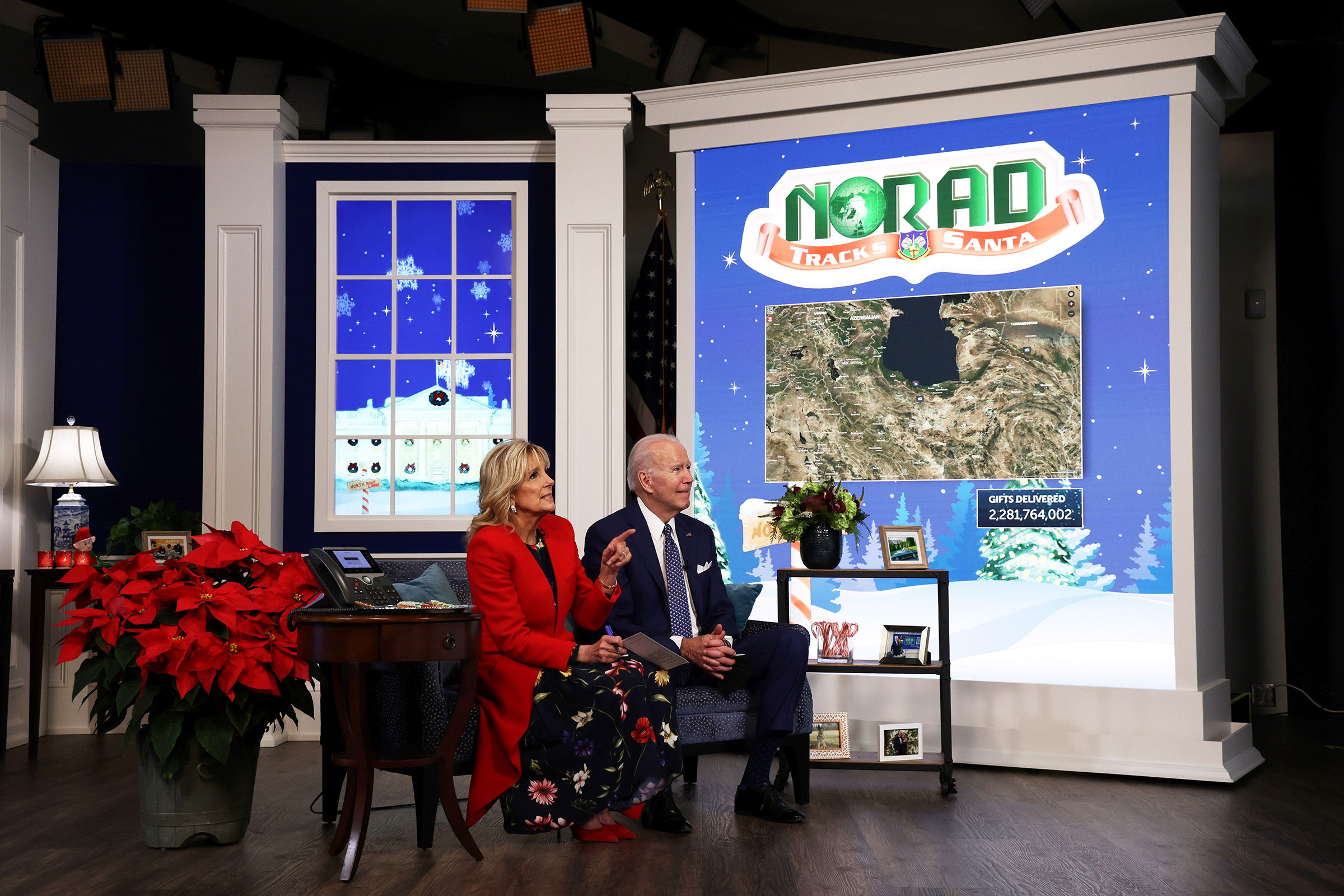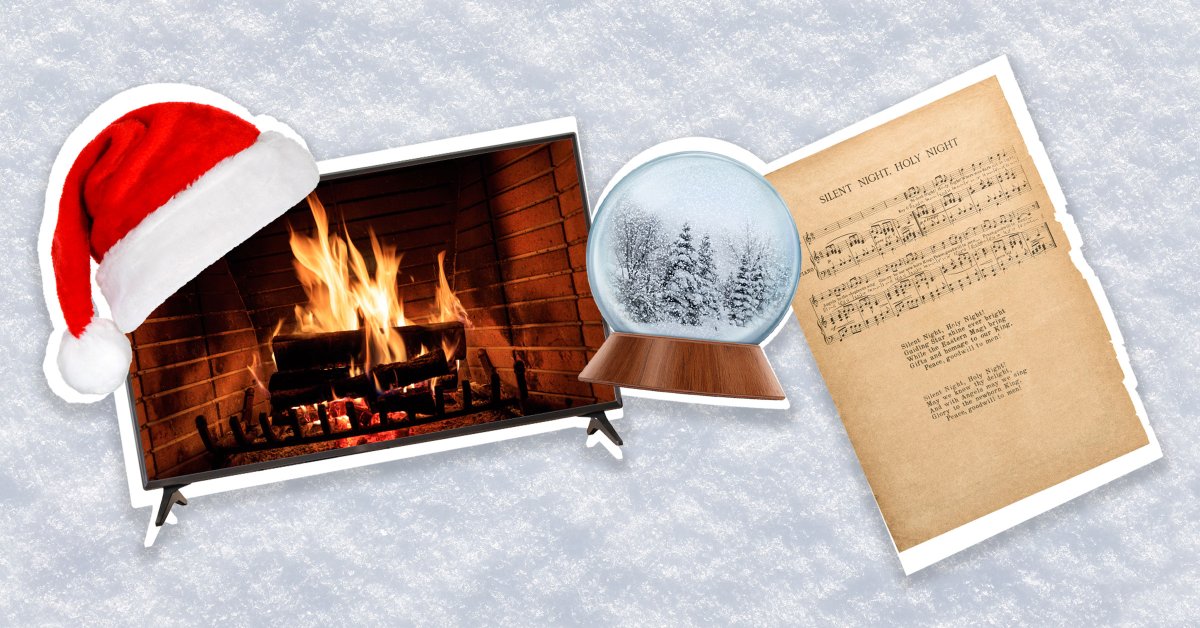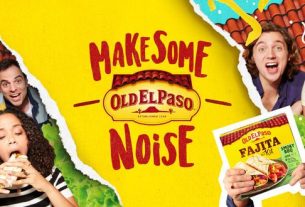For a holiday based on a Biblical event 2,000 years ago, many Christmas traditions are relatively new. While “Merry Christmas” can be traced back to the 16th century, a carol like “Do You Hear What I Hear?” only dates back to the 1960s, inspired by the Cuban Missile Crisis. Several traditions came about entirely by accident, like NORAD Santa Tracker, which started with a misprint in a newspaper. Others are products of wartime, and such rituals have helped bring people together during precarious times.
Here, are some of the most surprising stories behind popular Christmas rituals.
“Merry Christmas” greetings
Brian Earl’s Christmas Past: The Fascinating Stories Behind Our Favorite Holiday’s Traditions traces the first known instance of “Merry Christmas” to a 16th-century letter from a bishop to England’s Chief Minister, in which the religious leader hoped God would bless the politician with a “Merry Christmas.” The carol “God Rest Ye Merry, gentlemen” also dates back to that period and is proof that the phrase was gaining popularity.
But Charles Dickens’ A Christmas Carol popularized the phrase the most because it was a bestseller when it was published in 1843. At one point, Scrooge’s nephew exclaims “A Merry Christmas, uncle! God save you!” In that same period, the first commercially printed Christmas cards started coming out with the phrase “Merry Christmas.”
The TV Yule Log
Americans without a fireplace can just turn on their TVs at Christmastime and get an hours-long loop of a burning log, often with a soundtrack of Christmas carols.
The first televised yule log dates back to 1966, filmed at a fireplace in Gracie Mansion, then the home of New York City Mayor John Lindsay. The TV station WPIX found itself short on programming on Christmas Eve, and just headed down to the mayor’s house, where it broadcast full-color footage of his fireplace at 9:30 p.m.
However, the newscasters were not invited back because they removed the fireplace’s protective screen, and an errant spark damaged an antique rug. Other TV stations nationwide started creating their own versions in subsequent years.
Read more: The Surprisingly Sad True Story Behind ‘Rudolph the Red-Nosed Reindeer’
“Do You Hear What I Hear?“
Six decades ago, in Oct. 1962, husband-and-wife songwriters Nöel Regney—yes, Nöel—and Gloria Shayne wrote “Do You Hear What I Hear?” as a plea for peace during the Cuban Missile Crisis, according to Michael P. Foley’s Why We Kiss under the Mistletoe: Christmas Traditions Explained. That’s clear from the line “Pray for peace, people everywhere!” Coincidentally, Shayne grew up next door to President John F. Kennedy in Brookline, Mass.
“With the prospect of unspeakable war, my father was walking around New York and saw some babies and was very moved—and wrote the lyrics for ‘Do You Hear What I Hear,’” Gabrielle Regney, the songwriting duo’s daughter, an attorney in New Hampshire, told GBH News in 2019. She says the star in the line “A star, a star, dancing in the sky / With a tail as big as a kite” is a reference to nuclear bombs.
The Harry Simeone Chorale first performed the song, and it came out after Thanksgiving 1962, selling more than 250,000 copies. A year later, Bing Crosby’s rendition rose to the top of the Billboard charts.
Snow globes
Snow globes displayed for sale at the Christmas Market on Dec. 21, 2021 in Aachen, Germany.
Thierry Monasse—Getty Images
According to Earl, the common wintertime souvenir—a plastic or glass orb filled with liquid and fake snow that falls on a landscape—was originally developed as a way to light surgical operating rooms in the era before widespread electricity. In 1900, Erwin Perzy, who made surgical instruments in Vienna, Austria, tried placing a water-filled glass globe in front of candlelight to see if it would amplify the light, and put crushed up glass and white semolina powder inside, hoping they would serve as tiny reflectors.
It didn’t work out, but a friend of Perzy’s, who ran a souvenir shop next to the basilica of Mariazell, asked him to make globes with a mini version of the church filled with semolina. They flew off the shelves, and the Perzy family snow globe manufacturing business was born—now producing about 200,000 snow globes a year in 350 designs.
The snow globe became a Christmas tradition following World War II, when the Perzys made a snow globe with a Christmas tree, Santa Claus, and a snowman, which American troops took back to the States. American companies then started making their own versions, but the recipe for the original snow remains a family secret to this day. “I have a special machine for the production of the snow, and this machine is not in my factory. It’s in my private house,” Erwin Perzy III told Earl.
Read more: Here’s Why People Kiss Under the Mistletoe at Christmas
“Silent Night”
Another Christmas tradition of Austrian origins, the Christmas carol “Silent Night” was first performed in 1818 and was written by Joseph Mohr, a priest at the Catholic St. Nicholas Church in Oberndorf.
As Foley tells TIME, Mohr was “an Austrian priest who was very eager to celebrate a high mass for his congregation on Christmas, but the organ broke and couldn’t be repaired in time. So as consolation, he dusted off an old poem that he had written to commemorate the end of the Napoleonic Wars and then asked a friend to set it to music. And the result was ‘Silent Night.’”
Carolers helped the song spread beyond the church. A famous early performance occurred Christmas 1914 in the trenches of World War I, when German soldiers belted out the carol, and English soldiers started singing along with them, part of what’s known as the “Christmas Truce.”
NORAD’s Santa Tracker

President Joe Biden and first lady Dr. Jill Biden participate in an event to call NORAD and track the path of Santa Claus on Christmas Eve in the South Court Auditorium of the Eisenhower Executive Building on Dec. 24, 2021.
Alex Wong—Getty Images
In 1955, a child was trying to reach Santa from a phone number listed in a Sears Roebuck ad and, due to a misprint, ended up reaching the red phone at the Continental Air Defense Command (CONAD) Operations Center in Colorado Springs, Colo. At the height of the Cold War, the phone was only supposed to ring if there was bad news.
Air Force Col. Harry Shoup picked up the phone and pretended to be Santa. Since then, he was known as “Santa Colonel,” and he’d assigned an officer to answer calls and relay Santa’s location to any child who called in. The operation continued after the agency’s successor, the North American Aerospace Defense Command (NORAD), formed in 1958.
Each Christmas Eve, millions of visitors go to the agency’s “Santa Tracker” website, and an army of volunteers fields about 130,000 calls from little ones worldwide each Christmas season.
More Must-Reads From TIME



